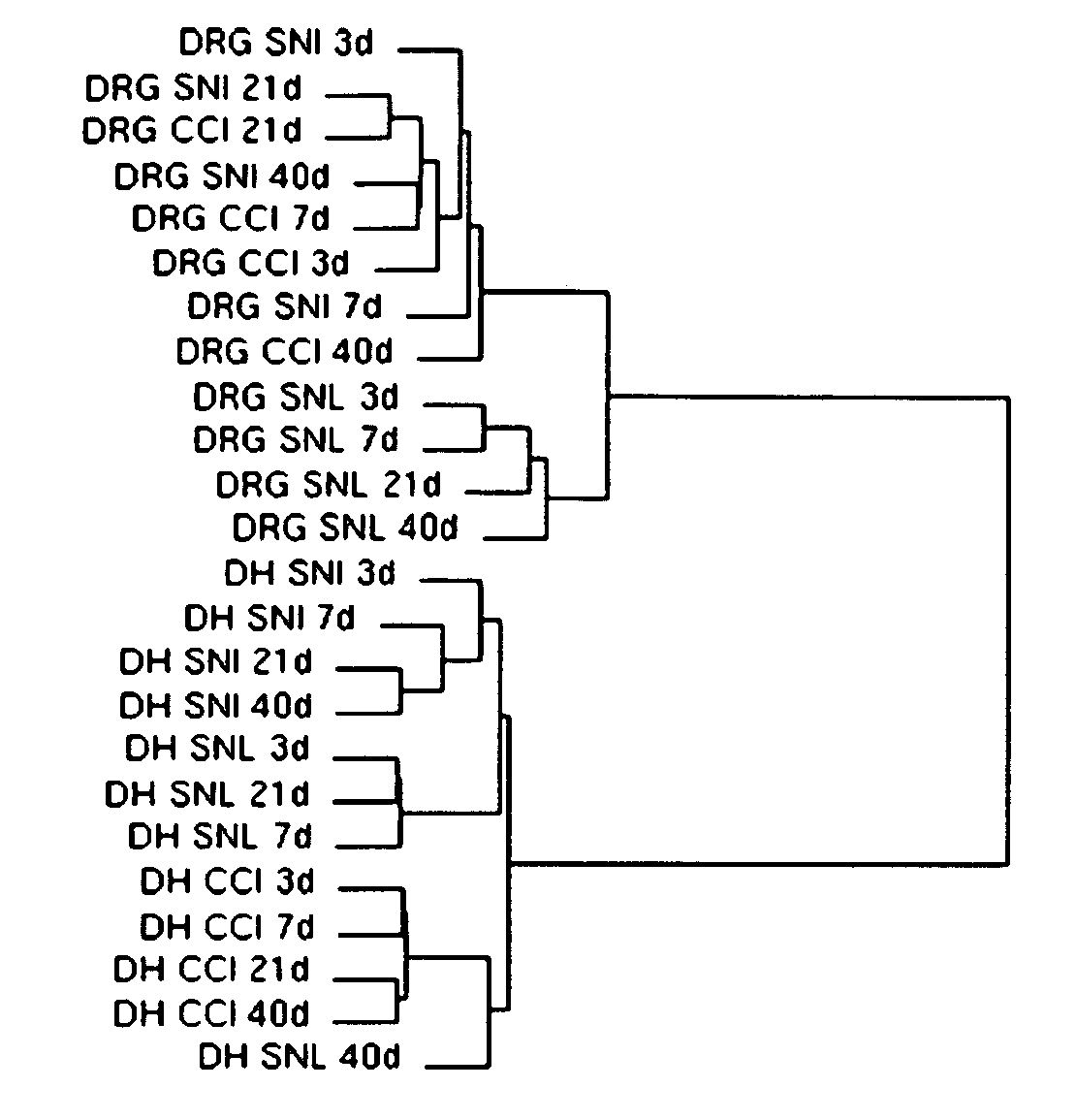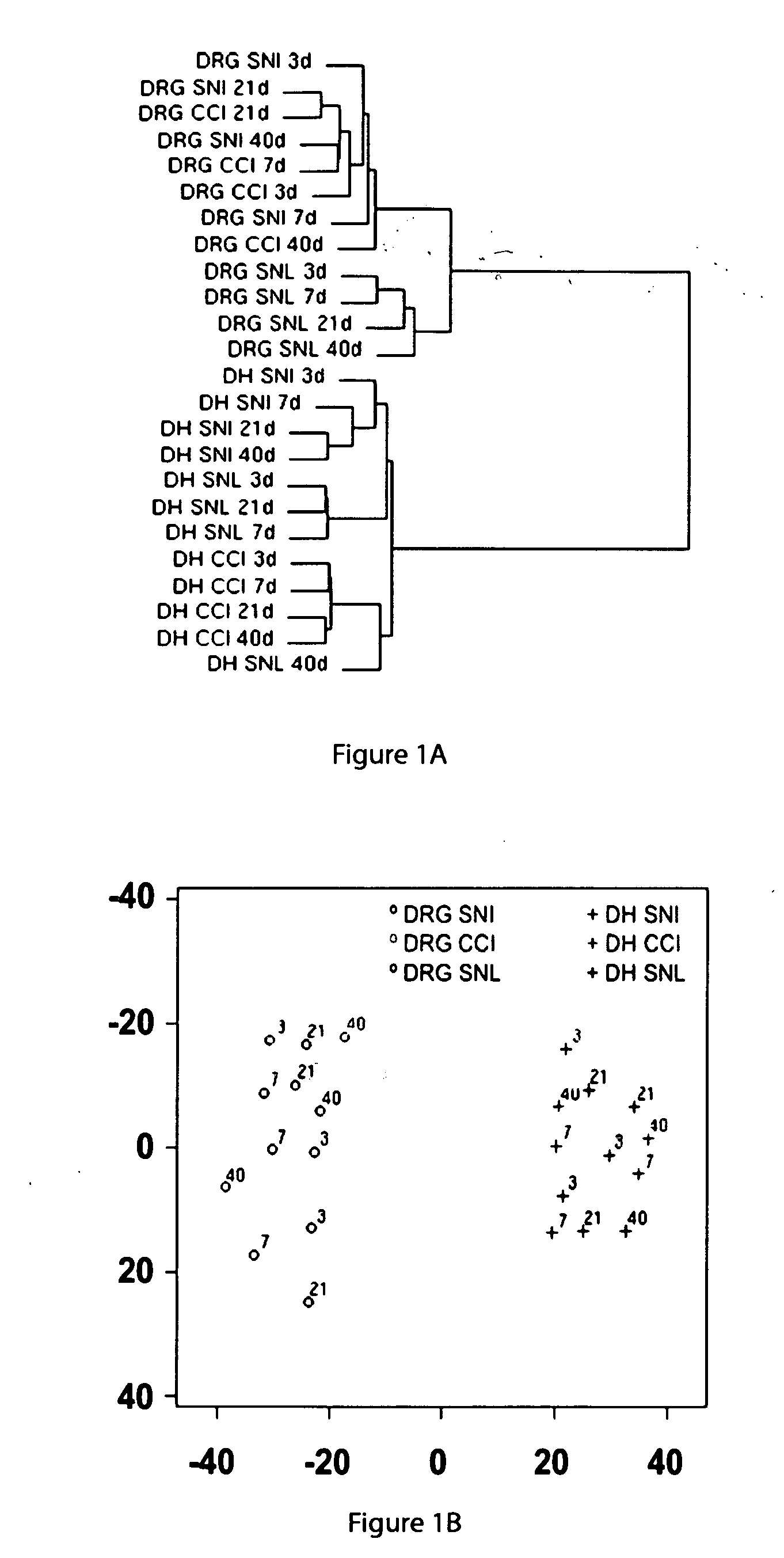Methods for treatment of pain
a technology for pain and treatment, applied in the field of pain treatment methods, can solve the problems of accompanied by substantial side effects, relatively ineffective current therapy, etc., and achieve the effects of reducing pain or symptoms, preventing pain, and enhancing or improving the prophylactic or therapeutic effect of another therapy
- Summary
- Abstract
- Description
- Claims
- Application Information
AI Technical Summary
Benefits of technology
Problems solved by technology
Method used
Image
Examples
example
[0167] Oligonucleotide microarrays were used to measure changes in gene expression in the dorsal horn (DH) and dorsal root ganglia (DRG) of the lumbar spinal cord of rats over time after the SNI, CCI, and SNL nerve injuries to establish both the unique and the shared features of the responses of the peripheral and central nervous systems to mechanical injuries of the peripheral nerve.
[0168] Briefly, for SNI, the tibial and common peroneal branches of the sciatic nerve were tightly ligated with a silk suture and transected distally, while the sural nerve was left intact. For CCI, three chromic gut sutures were loosely placed around the sciatic nerve at mid-thigh level. For SNL, an incision was made over the L4 / L5 lumbar vertebral column, the transverse processes removed on one side, and a spinal nerve (L4 or L5) tightly ligated. The three models, SNI, CCI, and SNL, all produce a similar pattern of mechanical allodynia and hyperalgesia.
[0169] The full data set of 8740 probe sets in ...
PUM
| Property | Measurement | Unit |
|---|---|---|
| Volume | aaaaa | aaaaa |
| Volume | aaaaa | aaaaa |
| Volume | aaaaa | aaaaa |
Abstract
Description
Claims
Application Information
 Login to View More
Login to View More - R&D
- Intellectual Property
- Life Sciences
- Materials
- Tech Scout
- Unparalleled Data Quality
- Higher Quality Content
- 60% Fewer Hallucinations
Browse by: Latest US Patents, China's latest patents, Technical Efficacy Thesaurus, Application Domain, Technology Topic, Popular Technical Reports.
© 2025 PatSnap. All rights reserved.Legal|Privacy policy|Modern Slavery Act Transparency Statement|Sitemap|About US| Contact US: help@patsnap.com



